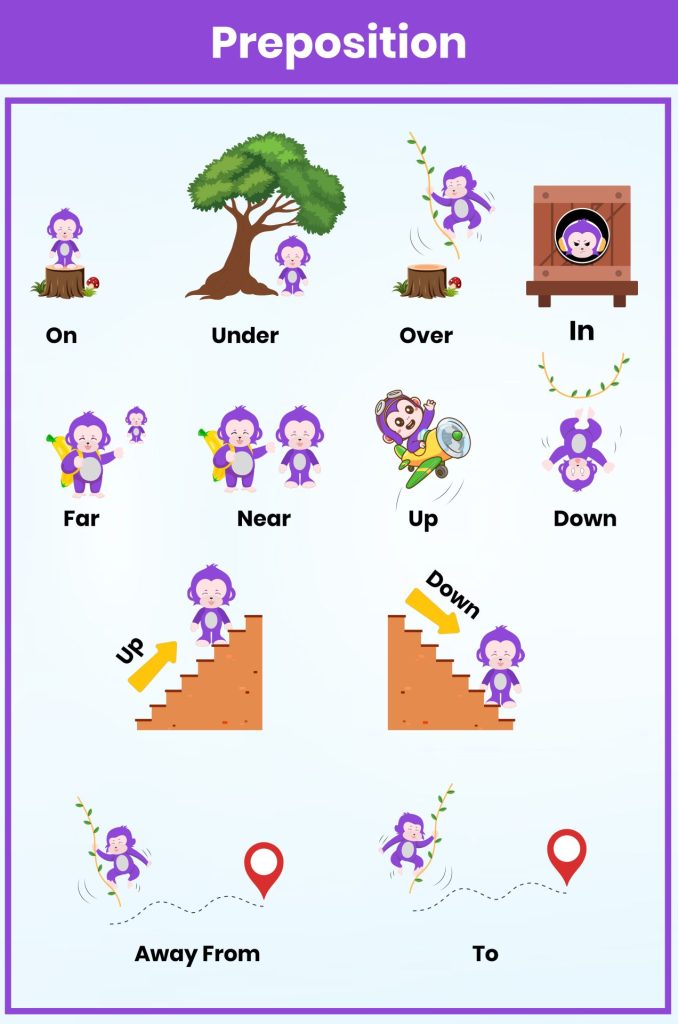Prepositions – Definition, Meaning & Example
Table of Contents
Introduction
Prepositions
In the realm of English grammar, prepositions play a crucial role in connecting words and phrases, indicating relationships between them. They are essential in conveying the position, direction, and time in a sentence. Let’s delve into the world of prepositions and understand their significance in language.
Analogy of Definition
What are Prepositions?
Prepositions are words that show the relationship between a noun or pronoun and other words in a sentence. They often indicate location, direction, time, or the relationship between two elements in a sentence. Prepositions are essential for providing clarity and context in communication.
Method
Types of Prepositions
1. Preposition of Direction
This type of preposition indicates the direction of movement or action. Examples include “to,” “towards,” “into,” “onto,” and “through.”
2. Preposition of Time
Prepositions of time indicate when an action takes place. Common examples include “at,” “on,” “in,” “since,” and “for.”
3. Preposition of Place
These prepositions describe the location of a person, object, or place. Examples include “in,” “on,” “at,” “under,” and “behind.”
4. Preposition of Space
Prepositions of space indicate the position of an object in relation to another. Examples include “above,” “below,” “beside,” “between,” and “among.”

Rules for Ending a Sentence with a Preposition
There is a common misconception that ending a sentence with a preposition is grammatically incorrect. However, this rule is not universally applicable in English grammar. While it is generally advisable to avoid ending a sentence with a preposition in formal writing, it is acceptable in casual or conversational language.
To learn more about prepositions, visit our site ChimpVine.
Examples
Using Prepositions in Sentences
1.Preposition of Direction
Example: The cat jumped onto the table.
2. Preposition of Time
Example: She will arrive at the airport in an hour.
3. Preposition of Place
Example: The book is under the bed.
4. Preposition of Space
Example: The birds flew between the trees.
2. Preposition of Time
Example: What are you looking for?
Quiz
Tips and Tricks
1. Direction Dilemma
Tip: Prepositions of direction indicate the movement or action towards a specific location.
2. Time Traveler
Tip: Prepositions of time specify the timing or occurrence of an action or event.
3. Location Logic
Tip: Prepositions of place describe the position or location of an object or person.
4. Space Search
Tip: Prepositions of space indicate the spatial relationship between two objects or places.
5. Ending Expressions
Tip: While ending a sentence with a preposition is generally discouraged in formal writing, it is acceptable in informal or conversational language.
Real life application
Story: “The Adventure of Sarah and Tom”
Sarah and Tom, two curious explorers, embarked on a journey that led them to apply their knowledge of prepositions in various real-life scenarios.
Scenario 1: Navigating the City
As they navigated the bustling city streets, Sarah used prepositions of direction to guide Tom to the nearest café. She instructed him to turn “onto” the main street and walk “towards” the tall building.
Scenario 2: Planning the Meeting
In preparation for a meeting, Tom scheduled it “at” 3 o’clock “in” the afternoon, demonstrating his understanding of prepositions of time to indicate the timing and occurrence of the event.
Scenario 3: Exploring the Park
During their nature walk, Sarah pointed out the various prepositions of place to describe the location of different landmarks. She mentioned that the birds were “in” the trees and the flowers were “beside” the path.
Scenario 4: Arranging the Furniture
Back at their home, Tom used prepositions of space to organize the furniture, ensuring that the table was “between” the chairs and the lamp was “above” the shelf.
Scenario 5: Conversational Clarity
In their casual conversations, Sarah and Tom comfortably ended their sentences with prepositions, emphasizing the importance of clear and natural communication in everyday interactions.
FAQ's
Like? Share it with your friends

